Metal Gear Solid 4 theme by Itachi
Download: MGS4_12.p3t

(1 background)
Redirect to:

The #1 spot for Playstation themes!
Raider Nation version 1.1 theme by facemask
Download: RaiderNationV1.1.p3t
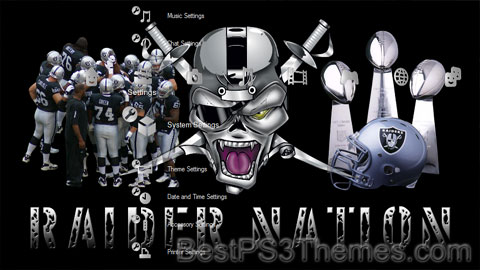
(1 background)
P3T Unpacker v0.12
Copyright (c) 2007. Anoop Menon
This program unpacks Playstation 3 Theme files (.p3t) so that you can touch-up an existing theme to your likings or use a certain wallpaper from it (as many themes have multiple). But remember, if you use content from another theme and release it, be sure to give credit!
Download for Windows: p3textractor.zip
Instructions:
Download p3textractor.zip from above. Extract the files to a folder with a program such as WinZip or WinRAR. Now there are multiple ways to extract the theme.
The first way is to simply open the p3t file with p3textractor.exe. If you don’t know how to do this, right click the p3t file and select Open With. Alternatively, open the p3t file and it will ask you to select a program to open with. Click Browse and find p3textractor.exe from where you previously extracted it to. It will open CMD and extract the theme to extracted.[filename]. After that, all you need to do for any future p3t files is open them and it will extract.
The second way is very simple. Just drag the p3t file to p3textractor.exe. It will open CMD and extract the theme to extracted.[filename].
For the third way, first put the p3t file you want to extract into the same folder as p3textractor.exe. Open CMD and browse to the folder with p3extractor.exe. Enter the following:
p3textractor filename.p3t [destination path]Replace filename with the name of the p3t file, and replace [destination path] with the name of the folder you want the files to be extracted to. A destination path is not required. By default it will extract to extracted.filename.
Haruhi theme by Andrew Watt (Saiyar)
Download: Haruhi.p3t

(3 backgrounds)
| Pronunciation | Japanese: [haɾɯçi] |
|---|---|
| Gender | Female |
| Origin | |
| Word/name | Japanese |
| Meaning | Spring day and has other meanings depending on the kanji. |
| Region of origin | Japan |
Haruhi (はるひ, ハルヒ) is a feminine Japanese given name that can be written with various kanji.
Haruhi can be written using different kanji characters and can mean:
The name can also be written in hiragana or katakana.
Beautiful Nature Silver Edition theme by Jewad Alnabi
Download: BeautifulNatureSE.p3t
Devil May Cry version 3.0 theme by _8_
Download: DevilMayCryV3.0.p3t
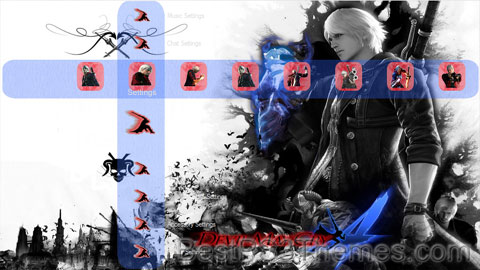
(1 background)
P3T Unpacker v0.12
Copyright (c) 2007. Anoop Menon
This program unpacks Playstation 3 Theme files (.p3t) so that you can touch-up an existing theme to your likings or use a certain wallpaper from it (as many themes have multiple). But remember, if you use content from another theme and release it, be sure to give credit!
Download for Windows: p3textractor.zip
Instructions:
Download p3textractor.zip from above. Extract the files to a folder with a program such as WinZip or WinRAR. Now there are multiple ways to extract the theme.
The first way is to simply open the p3t file with p3textractor.exe. If you don’t know how to do this, right click the p3t file and select Open With. Alternatively, open the p3t file and it will ask you to select a program to open with. Click Browse and find p3textractor.exe from where you previously extracted it to. It will open CMD and extract the theme to extracted.[filename]. After that, all you need to do for any future p3t files is open them and it will extract.
The second way is very simple. Just drag the p3t file to p3textractor.exe. It will open CMD and extract the theme to extracted.[filename].
For the third way, first put the p3t file you want to extract into the same folder as p3textractor.exe. Open CMD and browse to the folder with p3extractor.exe. Enter the following:
p3textractor filename.p3t [destination path]Replace filename with the name of the p3t file, and replace [destination path] with the name of the folder you want the files to be extracted to. A destination path is not required. By default it will extract to extracted.filename.
South Park theme by jbell
Download: SouthPark_3.p3t
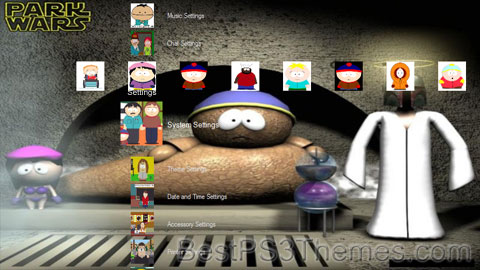
(10 backgrounds)
| South Park | |
|---|---|
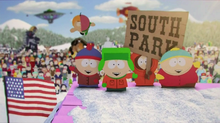 | |
| Genre | |
| Created by | |
| Developed by | Brian Graden |
| Showrunners |
|
| Voices of |
|
| Theme music composer | Primus |
| Composers |
|
| Country of origin | United States |
| Original language | English |
| No. of seasons | 26 |
| No. of episodes | 328 (list of episodes) |
| Production | |
| Executive producers |
|
| Producers |
|
| Cinematography | Kenny Gioseffi |
| Running time | 22 minutes[1] |
| Production companies |
|
| Original release | |
| Network | Comedy Central[nb 1] |
| Release | August 13, 1997 – present |
| Related | |
| The Spirit of Christmas | |
South Park is an American animated sitcom created by Trey Parker and Matt Stone and developed by Brian Graden for Comedy Central. The series revolves around four boys—Stan Marsh, Kyle Broflovski, Eric Cartman, and Kenny McCormick—and their exploits in and around the titular Colorado town. South Park also features many recurring characters. The series became infamous for its profanity and dark, surreal humor that satirizes a large range of subject matter.
Parker and Stone developed South Park from two animated short films, both titled The Spirit of Christmas, released in 1992 and 1995. The second short became one of the first Internet viral videos, leading to the series' production. The pilot episode was produced using cutout animation; the remainder of the series uses computer animation recalling the prior technique. Since the fourth season, episodes are generally written and produced during the week preceding its broadcast, with Parker serving as the lead writer and director.
Since its debut on August 13, 1997, 328 episodes of South Park have been broadcast. It debuted with great success, consistently earning the highest ratings of any basic cable program. Subsequent ratings have varied, but it remains one of Comedy Central's longest-running programs. In August 2021, South Park was renewed through 2027, and a series of television specials was announced for Paramount+, the first two of which were released later that year.[2][3] In October 2019, it was announced that WarnerMedia acquired exclusive streaming rights to South Park starting in June 2020 for HBO Max.[4] The series' twenty-sixth season premiered on February 8, 2023.[5]
South Park has received critical acclaim, and is included in various publications' lists of the greatest television shows. It has received numerous accolades, including five Primetime Emmy Awards and a Peabody Award. A theatrical film, South Park: Bigger, Longer & Uncut, was released in June 1999 to commercial and critical success, garnering an Academy Award nomination. In 2013, TV Guide ranked South Park the tenth Greatest TV Cartoon of All Time.[6]
South Park centers around four boys: Stan Marsh, Kyle Broflovski, Eric Cartman and Kenny McCormick. The boys live in the fictional small town of South Park, located within the real-life South Park basin in the Rocky Mountains of central Colorado,[7] approximately a one-hour drive from Denver.[8] The town is also home to an assortment of other characters, including students, families, elementary school staff, and other various residents.[9] Prominent settings include South Park Elementary, various neighborhoods and the surrounding mountain range, actual Colorado landmarks, and the businesses along the town's main street, all of which are based on the appearance of similar locations in Fairplay, Colorado.[7][9] As one of the few television programs set in the Mountain West region that takes place outside the urban core of Denver, South Park frequently features the unique culture of the region, including cattle ranchers, Old West theme parks, snowy climates, mountaineering, Mormons, real-life Colorado locations such as Casa Bonita and Cave of the Winds, and many other regionally specific characteristics.
Stan is portrayed as an average American boy; however, he has many mishaps throughout the series. In the first 22 seasons, Stan lived in South Park, but in the episodes during and after season 22, Stan resided in Tegridy Farms. Kyle is Jewish, and his portrayal as one of the few such people in South Park is often dealt with satirically.[10] Stan is modeled after Parker, while Kyle is modeled after Stone. They are best friends, and their friendship, symbolically intended to reflect Parker and Stone's friendship,[11] is a common topic throughout the series. Cartman (as he is commonly referred to) is amoral and increasingly psychopathic, and is commonly portrayed as an antagonist. His staunch antisemitism has resulted in a progressive rivalry with Kyle.[10][12] Kenny, who comes from a poor family, tightly wears his parka hood to the point where it obscures most of his face and muffles his speech. During the first five seasons, Kenny died in almost every episode before reappearing in the next with no definite explanation. He was killed off in the fifth season episode "Kenny Dies", before being reintroduced in the sixth season finale, "Red Sleigh Down". Since then, Kenny is depicted as dying sporadically. During the first 58 episodes, the children were in the third grade. During the fourth season, they entered the fourth grade, where they have remained ever since.[13][14]
Plots are often set in motion by events, ranging from the fairly typical to the supernatural and extraordinary, which frequently happen in the town.[15] The boys often act as the voice of reason when these events cause panic or incongruous behavior among the adult populace, who are customarily depicted as irrational, gullible, and prone to overreaction.[7][16] They are frequently confused by the contradictory and hypocritical behavior of their parents and other adults, and often perceive them as having distorted views on morality and society.[9][17]
Each episode opens with a tongue-in-cheek all persons fictitious disclaimer: "All characters and events in this show—even those based on real people—are entirely fictional. All celebrity voices are impersonated.....poorly. The following program contains coarse language and due to its content it should not be viewed by anyone."[18][19]
South Park was the first weekly program to be rated TV-MA,[20] and is generally intended for adult audiences.[21][22][23] The boys and most other child characters use strong profanity, with only the most taboo words being bleeped during a typical broadcast.[9] Parker and Stone perceive this as the manner in which real-life small boys speak when they are alone.[24][25]
South Park commonly makes use of carnivalesque and absurdist techniques,[26] numerous running gags,[27][28] violence,[28][29] sexual content,[30][31] offhand pop-cultural references, and satirical portrayal of celebrities.[32]
Early episodes tended to be shock value-oriented and featured more slapstick-style humor.[33] While social satire had been used on the show occasionally earlier on, it became more prevalent as the series progressed, with the show retaining some of its focus on the boys' fondness of scatological humor in an attempt to remind adult viewers "what it was like to be eight years old".[10] Parker and Stone also began further developing other characters by giving them larger roles in certain storylines,[10] and began writing plots as parables based on religion, politics, and numerous other topics.[9] This provided the opportunity for the show to spoof both extreme sides of contentious issues,[34] while lampooning both liberal and conservative points of view.[9][16][35] Rebecca Raphael described the show as "an equal opportunity offender",[15] while Parker and Stone describe their main purpose as to "be funny" and "make people laugh",[36][37] while stating that no particular topic or group of people be exempt from mockery and satire.[16][32][38][39][40]
Parker and Stone insist that the show is still more about "kids being kids" and "what it's like to be in [elementary school] in America",[41] stating that the introduction of a more satirical element to the series was the result of the two adding more of a "moral center" to the show so that it would rely less on simply being crude and shocking in an attempt to maintain an audience.[36][37] While profane, Parker notes that there is still an "underlying sweetness" aspect to the child characters,[34] and Time described the boys as "sometimes cruel but with a core of innocence".[11] Usually, the boys or other characters pondered over what transpired during an episode and conveyed the important lesson taken from it with a short monologue. During earlier seasons, this speech commonly began with a variation of the phrase "You know, I've learned something today...".[42]
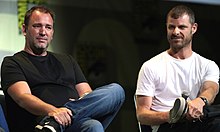
Parker and Stone met in film class at the University of Colorado in 1992 and discovered a shared love of Monty Python, which they often cite as one of their primary inspirations.[43] They created an animated short entitled The Spirit of Christmas.[27] The film was created by animating construction paper cutouts with stop motion, and features prototypes of the main characters of South Park, including a character resembling Cartman but named "Kenny", an unnamed character resembling what is today Kenny, and two near-identical unnamed characters who resemble Stan and Kyle. Fox Broadcasting Company executive and mutual friend Brian Graden commissioned Parker and Stone to create a second short film as a video Christmas card. Created in 1995, the second The Spirit of Christmas short resembled the style of the later series more closely.[44] To differentiate between the two homonymous shorts, the first short is often referred to as Jesus vs. Frosty, and the second short as Jesus vs. Santa. Graden sent copies of the video to several of his friends, and from there it was copied and distributed, including on the internet, where it became one of the first viral videos.[27][11]
As Jesus vs. Santa became more popular, Parker and Stone began talks of developing the short into a television series about four children residing in the fictional Colorado town of South Park. Fox eagerly agreed to meet with the duo about the show's premise, having prided itself on edgier products such as Cops, The Simpsons, and The X-Files. However, during the meeting at the Fox office in Century City, disagreements between the two creators and the network began to arise, mainly over the latter's refusal to air a show that included a supporting talking stool character named Mr. Hankey. Some executives at 20th Century Fox Television (which was to produce the series) agreed with its then-sister network's stance on Mr. Hankey and repeatedly requested Parker and Stone to remove the character in order for the show to proceed. Refusing to meet their demands, the duo cut ties with Fox and its sister companies all together and began shopping the series somewhere else.[45][46][47]
The two then entered negotiations with both MTV and Comedy Central. Parker preferred the show be produced by Comedy Central, fearing that MTV would turn it into a kids show.[48] When Comedy Central executive Doug Herzog watched the short, he commissioned for it to be developed into a series.[27][49] Parker and Stone assembled a small staff and spent three months creating the pilot episode "Cartman Gets an Anal Probe".[50] South Park was in danger of being canceled before it even aired when the show fared poorly with test audiences, particularly with women. However, the shorts were still gaining more popularity over the Internet, and Comedy Central ordered a run of six episodes.[36][48] South Park debuted with "Cartman Gets an Anal Probe" on August 13, 1997.[51]
Except for the pilot episode, which was produced using cutout animation, all episodes of South Park are created with the use of software, primarily Autodesk Maya.[52] As opposed to the pilot, which took three months to complete,[53] and other animated sitcoms, which are traditionally hand-drawn by companies in South Korea in a process that takes roughly eight to nine months,[27][35] individual episodes of South Park take significantly less time to produce. Using computers as an animation method, the show's production staff were able to generate an episode in about three weeks during the first seasons.[54] Now, with a staff of about 70 people, episodes are typically completed in one week,[27][34][35] with some in as little as three to four days.[55][56][57] Nearly the entire production of an episode is accomplished within one set of offices, which were originally at a complex in Westwood, Los Angeles, California and are now part of South Park Studios in Culver City, California.[49][53] Parker and Stone have been the show's executive producers throughout its entire history.[58] Debbie Liebling, who was Senior Vice President of original programming and development for Comedy Central, also served as an executive producer during the show's first five seasons, coordinating the show's production efforts between South Park Studios and Comedy Central's headquarters in New York City.[59][60] During its early stages, finished episodes of South Park were hastily recorded to D-2 to be sent to Comedy Central for airing in just a few days' time.[61] Each episode used to cost $250,000.[62]

Scripts are not written before a season begins.[63] Production of an episode begins on a Thursday, with the show's writing consultants brainstorming with Parker and Stone. Former staff writers include Pam Brady, who has since written scripts for the films Hot Rod, Hamlet 2 and Team America: World Police (with Parker and Stone), and Nancy Pimental, who served as co-host of Win Ben Stein's Money and wrote the film The Sweetest Thing after her tenure with the show during its first three seasons.[64][65] Television producer and writer Norman Lear, an alleged idol of both Parker and Stone, served as a guest writing consultant for the season seven (2003) episodes "Cancelled" and "I'm a Little Bit Country".[63][66][67] During the 12th and 13th seasons, Saturday Night Live actor and writer Bill Hader served as a creative consultant and co-producer.[68][69][70]
After exchanging ideas, Parker will write a script, and from there the entire team of animators, editors, technicians, and sound engineers will each typically work 100–120 hours in the ensuing week.[50] Since the show's fourth season (2000), Parker has assumed most of the show's directorial duties, while Stone relinquished his share of the directing to focus on handling the coordination and business aspects of the production.[27][71] On Wednesday, a completed episode is sent to Comedy Central's headquarters via satellite uplink, sometimes just a few hours before its air time of 10 PM Eastern Time.[27][72]
Parker and Stone state that subjecting themselves to a one-week deadline creates more spontaneity amongst themselves in the creative process, which they feel results in a funnier show.[27] The schedule also allows South Park to both stay more topical and respond more quickly to specific current events than other satiric animated shows.[10][73] One of the earliest examples of this was in the season four (2000) episode "Quintuplets 2000", which references the United States Border Patrol's raid of a house during the Elián González affair, an event which occurred only four days before the episode originally aired.[74] The season nine (2005) episode "Best Friends Forever" references the Terri Schiavo case,[25][34] and originally aired in the midst of the controversy and less than 12 hours before she died.[35][75] A scene in the season seven (2003) finale "It's Christmas in Canada" references the discovery of dictator Saddam Hussein in a "spider hole" and his subsequent capture, which happened a mere three days prior to the episode airing.[76] The season 12 (2008) episode "About Last Night..." revolves around Barack Obama's victory in the 2008 presidential election, and aired less than 24 hours after Obama was declared the winner, using segments of dialogue from Obama's real victory speech.[77]
On October 16, 2013, the show failed to meet their production deadline for the first time ever, after a power outage on October 15 at the production studio prevented the episode, season 17's "Goth Kids 3: Dawn of the Posers", from being finished in time. The episode was rescheduled to air a week later on October 23, 2013.[78]
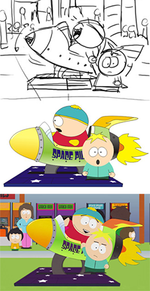
The show's style of animation is inspired by the paper cut-out cartoons made by Terry Gilliam for Monty Python's Flying Circus, of which Parker and Stone have been lifelong fans.[48][11][79] Construction paper and traditional stop motion cutout animation techniques were used in the original animated shorts and in the pilot episode. Subsequent episodes have been produced by computer animation, providing a similar look to the originals while requiring a fraction of the time to produce. Before computer artists begin animating an episode, a series of animatics drawn in Toon Boom are provided by the show's storyboard artists.[50][80]
The characters and objects are composed of simple geometrical shapes and primary and secondary colors. Most child characters are the same size and shape, and are distinguished by their clothing, hair and skin colors, and headwear.[17] Characters are mostly presented two-dimensionally and from only one angle. Their movements are animated in an intentionally jerky fashion, as they are purposely not offered the same free range of motion associated with hand-drawn characters.[10][53][81] Occasionally, some non-fictional characters are depicted with photographic cutouts of their actual head and face in lieu of a face reminiscent of the show's traditional style. Canadians on the show are often portrayed in an even more minimalist fashion; they have simple beady eyes, and the top halves of their heads simply flap up and down when the characters speak.[38]
When the show began using computers, the cardboard cutouts were scanned and re-drawn with CorelDRAW, then imported into PowerAnimator, which was used with SGI workstations to animate the characters.[50][53] The workstations were linked to a 54-processor render farm that could render 10 to 15 shots an hour.[50] Beginning with
Thundercats theme by jbell
Download: Thundercats_3.p3t
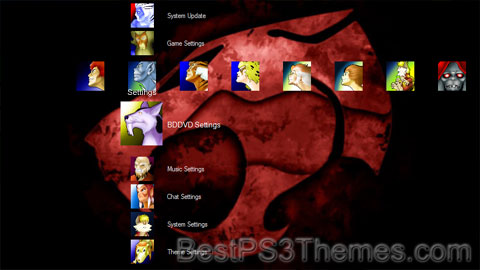
(6 backgrounds)
Redirect to:
This page is a redirect. The following categories are used to track and monitor this redirect:
|
STI theme by BLACKWRX
Download: STI.p3t
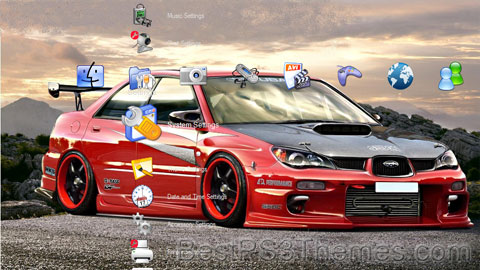
(1 background)
STI may refer to:
Frisky Dingo theme by Hahnzo
Download: FriskyDingo.p3t
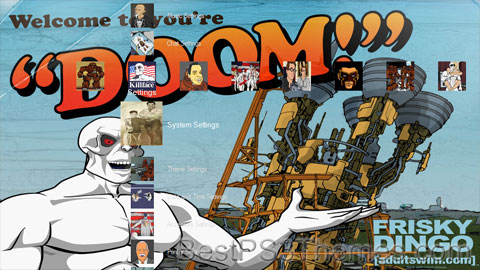
(8 backgrounds)
| Frisky Dingo | |
|---|---|
 | |
| Genre | Action Comedy Adult animation Animated sitcom |
| Created by | Adam Reed Matt Thompson |
| Written by | Adam Reed Matt Thompson |
| Directed by | Adam Reed Matt Thompson |
| Voices of |
|
| Composers | Casey Willis Killer Mike |
| Country of origin | United States |
| Original language | English |
| No. of seasons | 2 |
| No. of episodes | 25 |
| Production | |
| Executive producers | Adam Reed Matt Thompson Keith Crofford Mike Lazzo |
| Running time | 11 minutes |
| Production companies | 70/30 Productions Williams Street |
| Original release | |
| Network | Adult Swim |
| Release | October 16, 2006 – March 23, 2008 |
| Related | |
Frisky Dingo is an American adult animated television series created by Adam Reed and Matt Thompson for Adult Swim. The series revolves around the conflict between a supervillain named Killface and a superhero named Awesome X, alias billionaire Xander Crews, and much of the show's humor focuses on parodying superhero and action-movie clichés.[1]
It debuted on October 16, 2006, and its first season ended on January 22, 2007. The second season premiered on August 26, 2007, and ended on March 23, 2008. A third season was considered, but both the creators and Adult Swim mutually decided against it.[2] The production company, 70/30 Productions, subsequently went out of business in January 2009; Reed and Thompson would later found Floyd County Productions.
A spin-off show, The Xtacles, premiered on November 9, 2008, but only the two-episode premiere aired prior to the production company's closure, with no further episodes produced.
Frisky Dingo was created by 70/30 Productions, the same group of animators who worked on Sealab 2021. The show's name during development was Whiskey Tango. Because a band was already using the name, it was changed to Whiskey Tango Six. This name was determined not to be sufficiently distinct to avoid infringement suits, so the creators jokingly said they would call the show Frisky Dingo, and the name remained. In episode 113, Killface can be seen entering "Frisky Dingo" into the Annihilatrix launch terminal; this is mentioned in the second episode of the second season, where Sinn/Hooper remarks that "Frisky Dingo" is the launch code for the Annihilatrix.
According to an article in Atlanta Magazine, Whiskey Tango Six was going to be the name of the six-member superhero group on which the show focused, headed by husband and wife Jack and Grace Taggart.[3] The team flew around in a spaceship called the Glennis. Killface was going to be the main villain, but not a major character.[3] During revisions of the show's scripts, Killface became the focus of the show. When Whiskey Tango Six was replaced with Xander Crews/Awesome X and the Xtacles is not known.
The two main characters of the show are Killface, who is a naked, bone-white, red-eyed, earless, talon-toed, spur-heeled, 7-foot-tall (2.1 m), 440 lb., hairless, muscular humanoid supervillain focused on destroying Earth with his invention, the Annihilatrix;[4] and billionaire tycoon Xander Crews, who fights crime under the superhero alias Awesome X.[5] Both Killface and Xander are voiced by co-creator Adam Reed. The two have an ever-shifting relationship, changing from enemies to unwilling allies on many occasions.
Other major characters include Killface's son Simon – voiced by Christian Danley – an overweight, blond-haired, pale-skinned, sexually confused, teenaged Hannah Montana fan, who wears sweater vests and exhibits adolescent rebellion by muttering and breaking cereal bowls;[6] reporter Grace Ryan, former girlfriend of Xander Crews turned into Antagone, a toxic, radioactive ant-powered villainess; Sinn – voiced by Kelly Jenrette – later known as Hooper, originally Killface's sidekick and later his enemy;[7] and the Xtacles, Awesome X's team of easily distracted and remarkably inept, rocket-booted troops.[8]
Frisky Dingo takes place primarily in and around a large city simply called "Town" or "the Town". Its actual name never being mentioned becomes a running joke throughout the series. Despite its lack of a specific name, maps of "Town" are featured throughout the series, which closely resemble interstate roadmaps of the city of Atlanta, Georgia, where 70/30 Studios, producers of Frisky Dingo, were based. Additional evidence for "Town" being Atlanta is the presence of buildings suspiciously resembling the Cotton Mill Lofts (a location that at one time housed production operations for 70/30) burning in the second episode, "Meet Awesome-X". Also, in the episode where Killface is pandering to the African American church congregation, he is wearing what looks like Michael Vick's Atlanta Falcons football jersey.
| Season | Episodes | Originally aired | |||
|---|---|---|---|---|---|
| First aired | Last aired | Network | |||
| 1 | 13 | October 15, 2006 | January 21, 2007 | Adult Swim | |
| 2 | 12 | August 26, 2007 | March 23, 2008 | ||
The first season of Frisky Dingo follows the adversarial relationship between the villainous Killface, who aspires to strike fear into humankind before he drives the Earth into the Sun with his Annihilatrix, and Awesome X, the secret superhero identity of multibillionaire Xander Crews, who dreads retiring after having defeated the last known supervillain.
| No. overall | No. in season | Title | Original air date | Prod. code |
|---|---|---|---|---|
| 1 | 1 | "Meet Killface[9]" | October 15, 2006 | 101 |
| 2 | 2 | "Meet Awesome-X[9]" | October 22, 2006 | 102 |
|
Having dispatched the last supervillain, superhero Awesome X (Xander Crews) searches for ways to avoid retiring his hero persona and having to actually work at running his company. | ||||
| 3 | 3 | "Pimp My Revenue[9]" | October 29, 2006 | 103 |
|
Thrilled at the prospect of a new supervillain to exploit and market, Xander sets his plans for Killface in motion. Killface, whose direct marketing of his plan to destroy the world has been unexpectedly successful (although for the reason being a snafu involving a typo), finds himself with the opportunity to appear on a morning talk show, which doesn't go the way he planned. | ||||
| 4 | 4 | "XPO[9]" | November 5, 2006 | 104 |
|
Killface is in desperate need of some cash, so when a mysterious fax arrives announcing an inventor's expo with a $12 billion prize, he decides to enter the Annihilatrix. However, the expo is staged by Xander Crews, who hopes to trick Killface into signing over his action figure rights. | ||||
| 5 | 5 | "Kidnapped![9]" | November 12, 2006 | 105 |
|
Killface, desperate for cash and revenge, enacts a plan to find and kidnap billionaire Xander Crews. Meanwhile, Crews, still after action figure rights, enacts a plan to find and bribe Killface. Meanwhile, Grace Ryan's life hangs by her microphone's cord. | ||||
| 6 | 6 | "Emergency Room[9]" | November 19, 2006 | 106 |
|
The entire Dingo gang, grievously injured in the collapse of the Annihilatrix's catwalk, have all ended up in the same emergency room, and Killface has to deal with a lapsed health insurance plan and a very rude customer service telephone rep. | ||||
| 7 | 7 | "Meet Antagone[9]" | November 26, 2006 | 107 |
|
As Killface searches for Xander Crews, radioactive ants begin to take over Grace Ryan's mind and she transforms into voluptuous, ant-controlling supervillain Antagone, who has a hatred for Xander Crews. Antagone fights Killface during a bank robbery, blinding him with formic acid. Meanwhile, Crews is kidnapped by the Xtacles. | ||||
| 8 | 8 | "Blind Faith[9]" | December 3, 2006 | 108 |
|
Xander Crews copes with being broke and Xtacle-less, while Killface struggles with being blind. | ||||
| 9 | 9 | "The Odd Couple[9]" | December 10, 2006 | 109 |
|
Xander Crews, using the name Barnaby Jones, moves in with Killface; Simon runs away with all the knives; and Stan, posing as Awesome X, orders the Xtacles to find and kill Xander Crews. | ||||
| 10 | 10 | "Flowers for Nearl[9]" | December 17, 2006 | 110 |
|
The Xtacles find a replacement hostage for Xander Crews – his mentally retarded twin brother, Nearl. However, made intelligent through an experimental brain chemical, Nearl decides to reveal a little family history about the Crews brothers that would've made things complicated. | ||||
| 11 | 11 | "The Grate Escape[9]" | January 7, 2007 | 111 |
|
Killface and Crews attempt to sneak into the lair of criminal kingpin Torpedo Vegas in order to save Simon. | ||||
| 12 | 12 | "Penultimate Fighting[9]" | January 14, 2007 | 112 |
|
Killface and Crews are captured by Torpedo Vegas and forced to fight to the death, gladiator-style, in lieu of the regular rabbit fights. | ||||
| 13 | 13 | "Thrust Issues[9]" | January 21, 2007 | 113 |
|
Killface and Crews attempt to return to their lives amidst multiple betrayals, but have one last score to settle with each other. | ||||
At the beginning of the second season, Killface is taking credit for "curing" global warming due to the Annihilatrix having moved the Earth a total of three feet further from the Sun before it malfunctioned, and has decided to run for President of the United States. Xander Crews follows suit, reforming his company and launching his own presidential campaign.
| No. overall | No. in season | Title | Original air date | Prod. code |
|---|---|---|---|---|
| 14 | 1 | "Behold a Dark Horse[9]" | August 26, 2007 | 201 |
|
The Annihilatrix malfunctions moments after being initiated, moving the Earth three feet away from the Sun and ending global warming. Instead of destroying the world, Killface decides to play the global warming card and run for the office of President of the United States. | ||||
| 15 | 2 | "The Opposition[9]" | September 2, 2007 | 202 |
|
Following the incident on the Annihilatrix, Xander Crews is found to be living in financial ruin behind an RV dealership. Running an 'outreach center' made from cardboard boxes, Xander offers services such as boiling used hypodermic needles and selling them back to the homeless. Upon hearing of Killface's candidacy for President, Xander decides to run against him after revealing that he had the check for his vast fortune in his possession the entire time. | ||||
| 16 | 3 | "The Issues[9]" | September 9, 2007 | 203 |
|
Xander proposes Fred Dryer as his running mate after gaining the Republican nomination for President. Aboard his new campaign jet (as opposed to Killface's campaign bus), Crews outlines his proposals to improve education and alleviate illegal immigration. | ||||
| 17 | 4 | "The Image Problem[9]" | September 16, 2007 | 204 |
|
Xander and Killface both try to improve their images by going duck hunting, which Xander cannot distinguish from his annual panda hunt, but the two manage to reconnect when they get lost after an assassination ploy by Valerie. | ||||
| 18 | 5 | "The Miracle[9]" | September 23, 2007 | 205 |
|
After Valerie miraculously fails at another assassination attempt, Killface finds God and quickly ruins his campaign. Upon hearing that Simon is a homosexual, Killface renounces Christianity as a missile strikes him in the chest. | ||||
| 19 | 6 | "The Middle[9]" | September 30, 2007 | 206 |
|
Killface begins to recuperate after the rocket incident while Xander again attempts to recruit Fred Dryer as his running mate, only to find that Sinn has taken over the Xtacles. | ||||
| 20 21 | 7 8 | "The Debate[9]" (Parts 1 and 2) | October 7, 2007 October 14, 2007 | 207 208 |
|
Killface plans for the upcoming debate with Dottie, while Wendell looks into alternative campaign funds. Awesome X finds himself a prisoner along with Ronnie on board Xcalibur. While Killface prepares for the presidential debate, Xander makes a few stops with Ronnie before he arrives. Both Xander and Killface come to realize that neither of them is qualified or allowed to run for the presidency due to constitutional provisions they have both overlooked. Killface decides to follow up on his original plan to destroy the world. | ||||
| 22 | 9 | "A Take on 'Hooper'[9]" | March 2, 2008 | 209 |
|
Sinn and her 'Sisterhood of Chaos' (consisting of Valerie, Antagone, Watley, and the Decepticles, formerly the Xtacles) claim the Annihilatrix as their own, holding the world hostage. President Taqu'il, Xander, and Killface separately plan their own offensives to stop them. | ||||
| 23 | 10 | "Wendell Goes Undercover Again[9]" | March 9, 2008 | 210 |
|
Killface and Simon attempt to repair the burnt couplings on the Annihilatrix, while Stan and Taquil attempt an escape from their shot-down plane. Sinn and Valerie ask Watley to kill Antagone, while Wendell is sent by Xander to kill the giant ant baby. Both Wendell and Watley inadvertently fall in love with Antagone. | ||||
| 24 | 11 | "Cody Gains a Namesake[9]" | March 16, 2008 | 211 |
|
Valerie shoots Sinn and frames Wendell and Arthur. Xander learns he has an illegitimate daughter; when she comes to visit after her mother dies from cancer, Xander bribes her never to contact him again. Wendell decapitates Arthur when he tries to propose to Antagone. Antagone finally gives birth to her monster ant baby, which commits matricide by eating her head. | ||||
| 25 | 12 | "Differences are Put Slightly Aside[9]" | March 23, 2008 | 212 |
|
Wendell names the monster ant baby 'Cody 2' and rides it around town achieving orgasms on its back along the way. Everybody else races to the Annihilatrix, while the Deceptacles make a stew out of Arthur's decapitated body in the motel swimming pool. After killing Cody 2, Killface's alien brethren (including his mother) arrive to inquire about why the Earth has not yet been annihilated and why he is not wearing any clothes, to which Killface replies, "Funny story." | ||||
In Canada, Frisky Dingo previously aired on Teletoon's Teletoon at Night block,[10] and currently airs on the Canadian version of Adult Swim.[11]
| Title | Release date | No. of episodes |
Additional information |
|---|---|---|---|
| Season One | March 25, 2008 | 13 | Comes with a replica of Killface's 'Welcome to you're [sic] "doom!"' postcard |
| Season Two | January 6, 2009 | 12 | Features a brand-new short made to tie in with the spin-off series The Xtacles (as a result, the DVD box says 13 episodes), also comes with a Frisky Dingo sticker |
The Xtacles is a spin-off from Frisky Dingo in which the Xtacles, Xander Crews' private army, take a lead role. The series revolves around the Xtacles' lack of direction following the abduction of their leader by aliens at the end of Frisky Dingo. They take on random missions from President Stan, who returns from the previous series. The series premiered its only two episodes on November 9, 2008.
| No. | Title | Directed by | Written by | Original air date | Prod. code |
|---|---|---|---|---|---|
| 1 | "Operation: Mountain Punch" | Mack Williams & Matt Thompson | Christian Danley & Casey Willis | November 9, 2008 | 101 |
|
Paralyzed by a lack of leadership, The Xtacles struggle with the decision to decide about future decisions. Meanwhile, terrorists are systematically destroying the Rocky Mountains. Evil President Stan has no choice but to call on the Xtacles to stop the destruction of America's Favorite Mountain Range. | |||||
| 2 | "Operation: Murderous Conclusions" | Mack Williams & Matt Thompson | Christian Danley & Casey Willis | November 9, 2008 | 102 |
|
The Xtacles are called upon once again by Evil President Stan to solve the mystery of who "desecrated" the President's extravagant new statue. Using their typical mix of rash judgment, and murderous conclusions, the Xtacles pin the crime on an innocent man. Case Closed. | |||||
Nine Inch Nails theme by MetalHaze
Download: NineInchNails_2.p3t
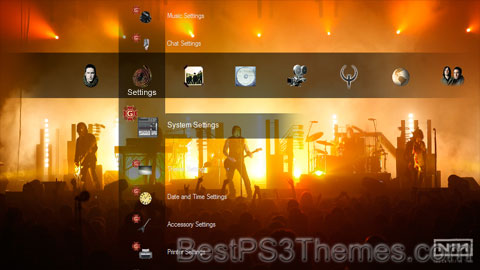
(16 backgrounds)
Nine Inch Nails | |
|---|---|
 Atticus Ross (left) and Trent Reznor (right) performing in October 2018 | |
| Background information | |
| Origin | Cleveland, Ohio, U.S. |
| Genres | |
| Discography | |
| Years active | 1988–present |
| Labels |
|
| Members | |
| Past members | List of Nine Inch Nails band members |
| Website | nin |
Nine Inch Nails, commonly abbreviated as NIN, stylized as NIИ, is an American industrial rock band formed in Cleveland in 1988. Singer, songwriter, multi-instrumentalist, and producer Trent Reznor was the only permanent member of the band until his frequent collaborator, Atticus Ross, joined in 2016. The band's debut album, Pretty Hate Machine (1989), was released via TVT Records. After disagreeing with TVT about how to promote the album, the band signed with Interscope Records and released the EP Broken (1992). The following albums, The Downward Spiral (1994) and The Fragile (1999), were released to critical acclaim and commercial success.
Following a hiatus, Nine Inch Nails resumed touring in 2005 and released their fourth album With Teeth (2005). Following the release of the next album Year Zero (2007), the band left Interscope after a feud. Nine Inch Nails continued touring and independently released Ghosts I–IV (2008) and The Slip (2008) before a second hiatus. Their eighth album, Hesitation Marks (2013), was followed by a trilogy which consisted of the EPs Not the Actual Events (2016) and Add Violence (2017) and their ninth album Bad Witch (2018). In 2020, Nine Inch Nails simultaneously released two further installments in the Ghosts series: Ghosts V: Together and Ghosts VI: Locusts.
When touring, Reznor typically assembles a live band to perform with him under the Nine Inch Nails name. This live band has varied over the decades, with various members leaving and returning; the most recent lineup consists of Robin Finck (who initially joined in 1994), Alessandro Cortini (who initially joined in 2005), and Ilan Rubin (who initially joined in 2008) alongside Reznor and Ross. The band's concerts are noted for their extensive use of thematic visual elements, complex special effects, and elaborate lighting. Songs are often rearranged to fit any given performance, and melodies or lyrics of songs that are not scheduled to be performed are sometimes assimilated into other songs.
Nine Inch Nails have sold over 20 million records and been nominated for 13 Grammy Awards, winning for the songs "Wish" in 1992 and "Happiness in Slavery" in 1996. Time magazine named Reznor one of its most influential people in 1997, while Spin magazine has described him as "the most vital artist in music". In 2004, Rolling Stone placed Nine Inch Nails at No. 94 on its list of the 100 greatest artists of all time. Nine Inch Nails were inducted into the Rock and Roll Hall of Fame in 2020, after being nominated in 2014 (their first year of eligibility) and again in 2015.

While living in Cleveland in 1987, Trent Reznor played keyboards in the Exotic Birds, a synthpop band managed by John Malm Jr.[1]: 38 Reznor became friends with Malm,[2] who informally became his manager when he left to work on his own music.[3] At the time, Reznor was employed as an assistant engineer and janitor at Right Track Studios.[4] Studio owner Bart Koster granted Reznor free access to the studio between bookings to record demos,[5][6] commenting that it cost him nothing more than "a little wear on [his] tape heads".[7] Unable to find a band that could articulate the material as he desired, Reznor was inspired by Prince to play all instruments himself except drums, which he programmed electronically.[8] He has continued to play most parts on Nine Inch Nails recordings ever since.[2]
The first Nine Inch Nails performance took place at the Phantasy Theater in Lakewood, Ohio, on October 21, 1988.[9] Soon after, following their live support of Skinny Puppy, Reznor aimed to release one 12-inch single on a small European label.[10] Several labels responded favorably to the demo material and Reznor signed with TVT Records.[4] Nine demos, recorded live in November 1988 and collectively known as Purest Feeling, were released in revised form on the first studio album, Pretty Hate Machine (1989).[1]: 41 The overall sound on Purest Feeling is lighter than that of Pretty Hate Machine; several songs contain more live drumming and guitar, as well as a heavier use of film samples.[11]
Reznor chose the name "Nine Inch Nails" because it "abbreviated easily" rather than for "any literal meaning".[12] Other rumored explanations have circulated, alleging that Reznor chose to refer to Jesus's crucifixion with nine-inch spikes,[13]: 57 or Freddy Krueger's nine-inch fingernails.[14] The Nine Inch Nails logo first appeared on the music video for their debut single, "Down in It". Reznor and Gary Talpas designed the logo, inspired by Tibor Kalman's typography on the Talking Heads album Remain in Light.[15][16] The logo features the band's initials, with the second N mirrored. Talpas, a native of Cleveland, continued to design Nine Inch Nails packaging until 1997.[17]
Written, arranged, and performed by Reznor,[18] Nine Inch Nails' first album Pretty Hate Machine debuted in 1989.[19] It marked his first collaboration with Adrian Sherwood (who produced the lead single "Down in It" in London without meeting Reznor face-to-face)[10] and Mark "Flood" Ellis.[1]: 42 Reznor asked Sean Beavan to mix the demos of Pretty Hate Machine, which had received multiple offers for record deals.[20] He mixed sound during Nine Inch Nails' live concerts for several years,[21] eventually becoming an unofficial member of the live band and singing live backup vocals from his place at the mixing console.[22] Flood's production would appear on each major Nine Inch Nails release until 1994, and Sherwood has made remixes for the band as recently as 2000. Reznor and his co-producers expanded upon the Right Track Studio demos by adding singles "Head Like a Hole" and "Sin".[23] Rolling Stone's Michael Azerrad described the album as "industrial-strength noise over a pop framework" and "harrowing but catchy music";[24] Reznor proclaimed this combination "a sincere statement" of "what was in [his] head at the time".[25] In fact, the song "Down in It" spent over two months on Billboard's club-play dance chart.[26] After spending 113 weeks on the Billboard 200,[27] Pretty Hate Machine became one of the first independently released records to attain platinum certification.[4]

Three music videos were created in promotion of the album. MTV aired the videos for "Down in It" and "Head Like a Hole", but an explicit video for "Sin" was only released in partial form for Closure. The original version of the "Down in It" video ended with the implication that Reznor's character had fallen off a building and died in the street.[28] This footage attracted the attention of the FBI.[29]
In 1989, while doing promotion for the album, the band members were asked on what shows they would like to appear. They jokingly replied (possibly while intoxicated) that they would like to appear on Dance Party USA, since it was the most absurd option they could think of at the time. Much to their surprise, they were booked on the show, and made an appearance.[30]
In 1990, Nine Inch Nails began the Pretty Hate Machine Tour Series, in which it toured North America as an opening act for alternative rock artists such as Peter Murphy and the Jesus and Mary Chain.[1]: 41 [4][31] Reznor began smashing his equipment while on stage; Rockbeat interviewer Mike Gitter attributed the live band's early success in front of rock oriented audiences to this aggressive attitude.[32] Nine Inch Nails then embarked on a world tour that continued through the first Lollapalooza festival in 1991.[1]: 42
After a poor European reception opening for Guns N' Roses,[33] the band returned to the US amid pressure from TVT to produce a follow-up to Pretty Hate Machine.[34] After finding out they were hindering control of his project, Reznor criticized the labeling of Nine Inch Nails as a commercially oriented band and demanded his label terminate his contract, but they ignored his plea.[35] In response, Reznor secretly began recording under various pseudonyms to avoid record company interference.[36] Involved in a feud with TVT, he signed a record deal with Interscope Records and created Nothing Records:
We made it very clear we were not doing another record for TVT. But they made it pretty clear they weren't ready to sell. So I felt like, well, I've finally got this thing going but it's dead. Flood and I had to record Broken under a different band name, because if TVT found out we were recording, they could confiscate all our shit and release it. Jimmy Iovine got involved with Interscope, and we kind of got slave-traded. It wasn't my doing. I didn't know anything about Interscope. And I was real pissed off at him at first because it was going from one bad situation to potentially another one. But Interscope went into it like they really wanted to know what I wanted. It was good, after I put my raving lunatic act on.[1]: 42
In 1992, Nine Inch Nails relocated to 10050 Cielo Drive, Benedict Canyon, Los Angeles (renamed "Le Pig" by Reznor), the site of the Tate murders, when Charles Manson's "family" murdered Sharon Tate,[37] wife of noted film director Roman Polanski, and four of her friends.[1]: 42 [4] The band used it to record Broken, an extended play (EP) that was the first Nine Inch Nails release distributed by Interscope Records[38] and reached the top 10 on the Billboard 200.[39] In the liner notes, Reznor credited the 1991 Nine Inch Nails touring band as an influence on the EP's sound.[40] He characterized Broken as a guitar-based "blast of destruction", and as "a lot harder ... than Pretty Hate Machine".[13] The inspiration for the harder sound came from the way the live band played during concerts such as Lollapalooza.[41] Songs from Broken earned Nine Inch Nails two Grammy Awards: a performance of the EP's first single "Happiness in Slavery" from Woodstock '94,[42] and the second single "Wish".[42] In reference to receiving the Grammy Award for Best Metal Performance for "Wish", Reznor joked that "Wish" became "the only song to ever win a Grammy that says 'fist fuck' in the lyrics."[43] Against touring of the brand new material, Reznor began living and recording full-time at Le Pig, working on a follow-up free of restrictions from his record label.[1]: 42
Peter Christopherson of the bands Coil and Throbbing Gristle directed a performance video for "Wish",[44] but the EP's most controversial video accompanied "Happiness in Slavery".[45] The video was almost universally banned[45] for its graphic depiction of performance artist Bob Flanagan disrobed and lying on a machine that pleases, tortures, then (apparently) kills him.[46] A third video for "Pinion", partially incorporated into MTV's Alternative Nation opening sequence, showed a toilet that apparently flushes into the mouth of a person in bondage.[47] Reznor and Christopherson compiled the three clips along with footage for "Help Me I Am in Hell" and "Gave Up" into a longform music video titled Broken.[48] It depicts the murder of a young man who is kidnapped and tortured while forced to watch the videos.[48] This footage was never officially released, but instead appeared covertly among tape trading circles.[46][48] A separate performance video for "Gave Up" featuring Richard Patrick and Marilyn Manson was filmed at Le Pig. A live recording of "Wish" was also filmed, and both videos appeared in Closure.[49]
Broken was followed by the companion remix EP Fixed in late 1992.[48] The only track that was left off the final version of the release is the remix of "Last", produced by Butch Vig (the outro of the "Last" remix is heard in "Throw This Away", which also includes Reznor's remix of "Suck").[50] The unedited version appeared on the internet as an 8-bit mono 11 kHz file, "NIN_LAST.AIFF", available by FTP from cyberden.com in 1993; it has been removed from the website, but can still be found on p2p networks (Reznor subsequently made it available in higher quality (256 kbit/s mp3) at remix.nin.com). Vig later spoke about his remix while answering questions on a music production forum, saying "I started recording a lot of new parts, and took it in a much different direction. When it was finished, Trent thought the front part of the mix didn't fit the EP, so he just used the ending. I'm glad it's on his website. Duke and Steve worked with me on the remix, in the very early days of Garbage."[51]

Early ideas for The Downward Spiral arose after the Lollapalooza 1991 festival's concerts ended in September.[52] Reznor elaborated the album's themes into lyrics.[1]: 42 Despite initially choosing to record the album in New Orleans,[53] Reznor searched for and moved to 10050 Cielo Drive, in Los Angeles (known as the Manson Murder House)[54] renting it for $11,000 per month from July 4, 1992, the start of the making of both Broken and The Downward Spiral.[55][56]
Nine Inch Nails' second studio album, The Downward Spiral, entered the Billboard 200 at number two,[57] and is the band's highest seller in the US, over four million copies, among five million worldwide.[58] Influenced by Pink Floyd and by David Bowie of the 1970s,[4] The Downward Spiral's diverse textures and moods depict a protagonist's mental progress.[59] Flood co-produced several tracks, while Alan Moulder mixed most,[60] and later found more extensive production duties on future albums. Reznor invited Sean Beavan to work on The Downward Spiral.[1] After contributing to remixes of Nine Inch Nails songs, such as "Closer", Beavan mixed and co-produced Marilyn Manson's Antichrist Superstar in 1996.[61] The Downward Spiral, like Broken, was recorded at Le Pig Studios.[37] "March of the Pigs" and "Closer" were singles. Two other tracks, "Hurt" and "Piggy", though not singles, were issued to radio. Also in 1994, the band released the promotional single "Burn", which Reznor produced, on the soundtrack of Oliver Stone film Natural Born Killers.[62] as well as a cover of the Joy Division song "Dead Souls" on the soundtrack to the film The Crow, which went to number 1 on the Billboard 200 album chart.[63]
The music video for "Closer", directed by Mark Romanek, was in MTV's frequent rotation, although the network, deeming it too graphic, heavily censored the original.[64] The video shows events in a laboratory dealing with religion, sexuality, animal cruelty, politics, and terror; controversial imagery included a nude bald woman with a crucifix mask, a monkey tied to a cross, a pig's head spinning on some type of machine, a diagram of a vulva, Reznor wearing an S&M mask while swinging in shackles, and of him wearing a ball gag.[65] A radio edit that partially mutes the song's explicit lyrics also received extensive airtime.[1]: 96
Contemporary critics generally praised The Downward Spiral, now classed among the most important albums of the 1990s. In 2005, Spin ranked it 25th among the "100 Greatest Albums, 1985–2005".[66] In 2003, Rolling Stone ranked it 200 among "The 500 Greatest Albums of All Time".[67] Blender named it the 80th Greatest American Album. It was ranked No. 488 in the book The Top 500 Heavy Metal Albums of All Time by Martin Popoff. In 2001 Q named The Downward Spiral as one of the 50 Heaviest Albums of All Time;[68] in 2010 the album was ranked No. 102 on their 250 Best Albums of Q's Lifetime (1986–2011) list.[69] After The Downward Spiral's release, Reznor produced an accompanying remix album entitled Further Down the Spiral, the only non-major Nine Inch Nails release to be certified gold in the United States[58] and among the best-selling remix albums of all time. It contained contributions from Coil with Danny Hyde, electronic musician Aphex Twin, producer Rick Rubin, and Jane's Addiction guitarist Dave Navarro, among others.[70]
After The Downward Spiral's 1994 release, the live band supported it by embarking on the Self Destruct Tour. The stage set-up featured dirty curtains, rising and lowering for visuals shown during songs such as "Hurt". The tour debuted the band's grungy, messy image as the members appeared in ragged attire slathered in corn starch. Performances were violent and chaotic, band members often injuring themselves by attacking each other, diving into the crowd, and destroying their instruments to close.[71] The widest mainstream audience was a mud-soaked performance at Woodstock '94, and seen by Pay-Per-View in up to 24 million homes.[72][73] Enjoying mainstream success thereafter, Nine Inch Nails then performed amid greater production values, adding theatrical visual elements. Supporting acts on tour included the Jim Rose Circus and Marilyn Manson.[74] Released in 1997, the Closure video documented highlights from the tour, including full live videos of "Eraser", "Hurt" and a one-take "March of the Pigs" clip directed by Peter Christoperson.[75] In 1997 Reznor also produced the soundtrack to the David Lynch film Lost Highway, which featured one new Nine Inch Nails song, "The Perfect Drug".[76] Around this time, Reznor's studio perfectionism,[77] struggles with addiction, and bouts of writer's block prolonged the production of The Fragile.[78]
Five years elapsed between The Downward Spiral and Nine Inch Nails' next studio album, The Fragile, which arrived as a double album in September 1999.[79] The Fragile was conceived by making "songwriting and arranging and production and sound design ... the same thing. A song would start with a drum loop or a visual and eventually a song would emerge out of it and that was the song."[80] Canadian rock producer Bob Ezrin was consulted on the album's track listing; the liner notes state that he "provided final continuity and flow."[81]
On the heels of the band's previous successes, media anticipation surrounded The Fragile more than a year before its release,[82] when it was already described as "oft-delayed".[83] The album debuted at number one on the Billboard 200, selling 228,000 copies in its first week and receiving generally positive reviews.[79] Spin hailed The Fragile as the "album of the year", whereas Pitchfork Media panned its "melodramatic" lyrics.
Posts pagination